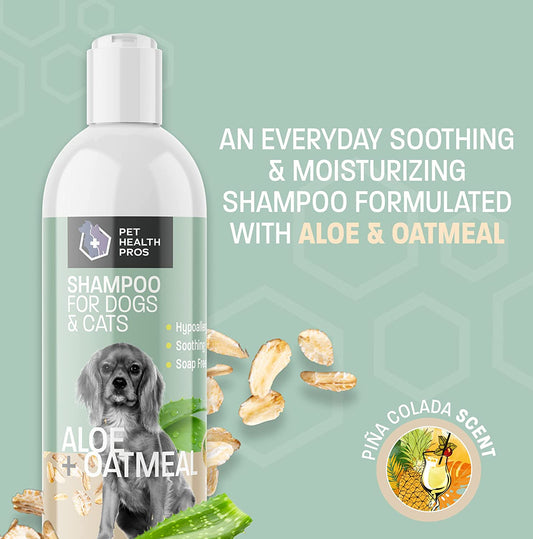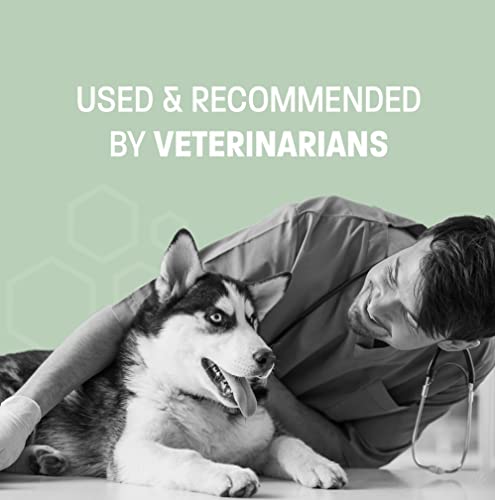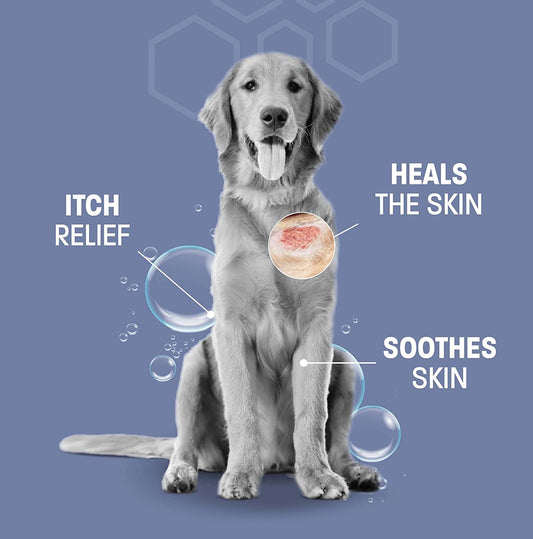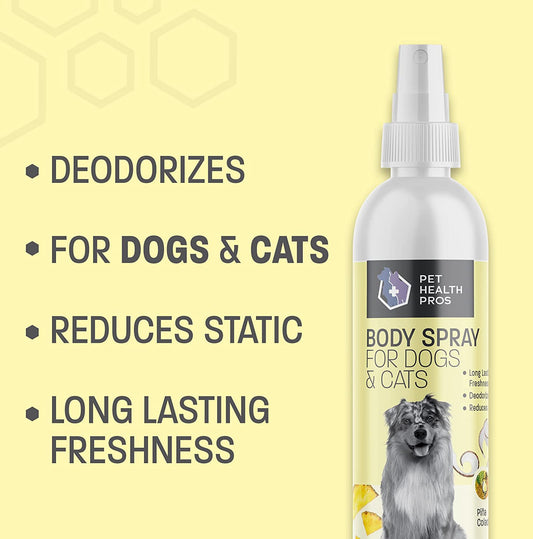Choosing the right antifungal shampoo for your dog can be tricky, but it's important to keep your furry friend healthy and comfortable. Fungal infections can cause a lot of discomfort and even lead to more serious health issues if not treated properly. This guide will help you understand what to look for in an antifungal shampoo and how to use it effectively.
Key Takeaways
- Fungal infections in dogs can spread easily and cause serious health problems if not treated.
- Look for shampoos with active antifungal agents like ketoconazole or miconazole.
- Avoid shampoos with harsh chemicals that can irritate your dog's skin.
- Proper bathing techniques are crucial for the shampoo to be effective.
- Regular vet check-ups and good hygiene can help prevent future fungal infections.
Understanding Fungal Infections in Dogs
Common Types of Fungal Infections
Dogs can suffer from various fungal infections. Ringworm is a common type, despite its name, it's caused by a fungus, not a worm. Another frequent infection is yeast dermatitis, which often affects the skin and ears. Aspergillosis, though less common, can be severe and usually affects the respiratory system.
Symptoms to Watch For
If your dog is very itchy, has a weird smell, or is losing fur, they might have a fungal infection. Other symptoms include red or flaky skin, swelling, and sores. In some cases, dogs may also experience lethargy and loss of appetite.
How Fungal Infections Spread
Fungal infections can spread through direct contact with an infected animal or contaminated objects. Spores from fungi can also be inhaled, leading to respiratory infections. Maintaining good hygiene and regular vet check-ups can help prevent the spread of these infections.
Key Ingredients to Look for in Antifungal Shampoos
When choosing an antifungal shampoo for your dog, it's important to know which ingredients are most effective. Understanding these key components can help you make the best choice for your pet's health.
Active Antifungal Agents
Active antifungal agents are the primary ingredients that fight fungal infections. Look for shampoos containing:
- Ketoconazole: A powerful antifungal that treats a variety of fungal infections.
- Miconazole: Effective against yeast and fungal infections.
- Chlorhexidine: Often used in combination with other agents to enhance effectiveness.
Soothing and Healing Components
In addition to antifungal agents, it's beneficial to have ingredients that soothe and heal your dog's skin. These can include:
- Aloe Vera: Known for its soothing properties.
- Oatmeal: Helps to relieve itching and irritation.
- Coconut Oil: Moisturizes and promotes healing.
Ingredients to Avoid
Some ingredients can be harmful or irritating to your dog's skin. Avoid shampoos with:
- Artificial Fragrances: Can cause allergic reactions.
- Parabens: Linked to skin irritation and other health issues.
- Sulfates: Can strip natural oils and worsen skin conditions.
Always consult your veterinarian before using any over-the-counter antifungal treatments for your dog. Human products may be harmful or ineffective.
By understanding these key ingredients, you can choose a shampoo that not only fights fungal infections but also supports your dog's overall skin health.
How to Properly Use Antifungal Shampoo on Your Dog
Preparation Before Bathing
Before you start, gather all the necessary supplies. This includes the antifungal shampoo, towels, a brush, and a cup for rinsing. Make sure your dog is calm and comfortable. Brushing your dog before the bath can help remove loose fur and tangles, making the shampoo more effective.
Step-by-Step Bathing Guide
- Wet your dog's coat thoroughly with lukewarm water. Avoid using hot water as it can irritate the skin.
- Apply the antifungal shampoo generously, starting from the neck and working your way down to the tail. Be careful to avoid the eyes and ears.
- Massage the shampoo into the coat and skin, ensuring it reaches all affected areas. Let it sit for the recommended time, usually around 10-15 minutes.
- Rinse thoroughly with lukewarm water until all the shampoo is washed out. Any residue can cause irritation.
- Dry your dog with a clean towel. You can also use a blow dryer on a low setting if your dog is comfortable with it.
Post-Bath Care Tips
After the bath, keep your dog in a warm, dry place to prevent them from getting chilled. Check the skin for any signs of irritation or allergic reactions. If you notice any, consult your vet immediately. Regularly clean your dog's bedding and living area to prevent reinfection. Maintaining proper hygiene is crucial for your dog's recovery.
Consistency is key. Regular use of the antifungal shampoo as directed by your vet will help ensure your dog's skin heals properly and stays healthy.
Top Recommended Antifungal Shampoos for Dogs
When it comes to choosing the best antifungal shampoo for your dog, there are several options available. Here are some of the top recommended choices:
Veterinarian-Approved Shampoos
Veterinarians often recommend specific shampoos that have been proven effective. One such product is the Veterinary Formula Clinical Care Antiseptic & Antifungal Shampoo. This shampoo is known for its ability to treat a variety of fungal infections and is considered the best antiseptic and antifungal dog shampoo for the money.
Popular Over-the-Counter Options
For those looking for over-the-counter solutions, there are many popular options. These shampoos are easily accessible and can be found in most pet stores. They are formulated to tackle common fungal infections and provide relief for your dog.
Natural and Organic Choices
If you prefer natural and organic products, there are shampoos available that use ingredients like tea tree oil and aloe vera. These shampoos are gentle on your dog's skin while still being effective against fungal infections.
Choosing the right antifungal shampoo can make a significant difference in your dog's health and comfort. Always consult with your vet before starting any new treatment.
By considering these top recommended antifungal shampoos, you can help ensure your dog stays healthy and happy.
Preventing Future Fungal Infections
Maintaining Proper Hygiene
Keeping your dog clean is the first step in preventing fungal infections. Regular grooming helps remove dirt and debris that can harbor fungi. Bathing your dog with an antifungal shampoo can also be a proactive measure to keep infections at bay. Make sure to clean your dog's bedding and toys frequently to avoid any contamination.
Regular Vet Check-Ups
Routine visits to the vet are crucial for early detection of any health issues, including fungal infections. Your vet can provide tailored advice and recommend treatments like ketoconazole or miconazole if needed. Early detection can prevent the spread of infection and make treatment more effective.
Diet and Nutrition Tips
A balanced diet is essential for your dog's overall health, including its skin and coat. Foods rich in omega-3 fatty acids can help maintain healthy skin, making it less susceptible to infections. Consult your vet for dietary recommendations that can boost your dog's immune system and keep fungal infections at bay.
Regular grooming, maintaining a clean environment, and practicing good hygiene are key to preventing fungal infections in dogs.
Potential Side Effects and How to Handle Them
Common Side Effects
When using antifungal shampoos on your dog, it's important to be aware of potential side effects. Common side effects include skin irritation, redness, and itching. In some cases, dogs may experience hair loss or a rash. If you notice any of these symptoms, it's crucial to stop using the product and consult your vet.
When to Contact Your Vet
If your dog shows signs of severe reactions such as swelling, difficulty breathing, or extreme discomfort, contact your vet immediately. These could be signs of an allergic reaction. Additionally, if the initial symptoms of the fungal infection worsen or do not improve after a few weeks of treatment, a vet visit is necessary.
Alternative Treatments
If your dog cannot tolerate antifungal shampoos, there are alternative treatments available. These include oral antifungal medications, topical creams, and natural remedies like coconut oil. Always discuss these options with your vet to ensure they are safe and effective for your pet.
Keeping your dog's environment clean and dry can help prevent future infections and reduce the need for frequent treatments.
Customer Reviews and Testimonials
Success Stories
Many dog owners have shared their positive experiences with antifungal shampoos. For instance, one customer mentioned that Vetericyn Plus All Animal Wound Care was effective and did not cause any discomfort to their dog. They noted that their dogs didn't flinch or notice when it was applied, which is a good sign of its gentle nature.
Common Concerns
While many reviews are positive, some customers have raised concerns. Common issues include the shampoo not working as quickly as expected or causing mild skin irritation. It's important to monitor your dog's reaction and consult your vet if you notice any adverse effects.
How to Choose Based on Reviews
When selecting an antifungal shampoo, consider the following tips based on customer reviews:
- Look for products with high ratings and detailed reviews.
- Pay attention to comments about the shampoo's effectiveness and gentleness.
- Consider the experiences of dogs with similar conditions to your own.
Reading through customer reviews can provide valuable insights and help you make an informed decision. Always remember to consult your vet for professional advice.
Our customers love our products! From soothing shampoos to calming treats, pet owners can't stop raving about the results. Want to see what all the buzz is about? Check out our website and read more reviews from happy pet parents.
Conclusion
Choosing the right antifungal shampoo for your dog is important for their health and happiness. By understanding your dog's needs and consulting with your vet, you can find a shampoo that works best. Remember to look for key ingredients, read reviews, and follow the instructions on the label. With the right care, your dog can be free from fungal infections and enjoy a shiny, healthy coat.
Frequently Asked Questions
What are common signs of fungal infections in dogs?
Common signs include itching, redness, flaky skin, and sometimes a musty odor. Your dog might also lose patches of fur.
How often should I use antifungal shampoo on my dog?
It's best to follow your vet's advice, but generally, you might need to bathe your dog with antifungal shampoo once or twice a week until the infection clears.
Can I use human antifungal shampoo on my dog?
No, you should not use human antifungal shampoo on dogs. Dogs have different skin pH levels, and human products can be too harsh for them.
Are natural antifungal shampoos effective?
Yes, many natural antifungal shampoos can be effective. Look for ingredients like tea tree oil and aloe vera, which can help soothe and heal the skin.
What should I do if my dog's skin gets worse after using antifungal shampoo?
If your dog's skin condition worsens, stop using the shampoo and consult your vet immediately. Your dog might be allergic to an ingredient in the shampoo.
How can I prevent future fungal infections in my dog?
Keep your dog clean and dry, regularly check their skin for any signs of infection, and maintain a healthy diet. Regular vet check-ups are also important.









